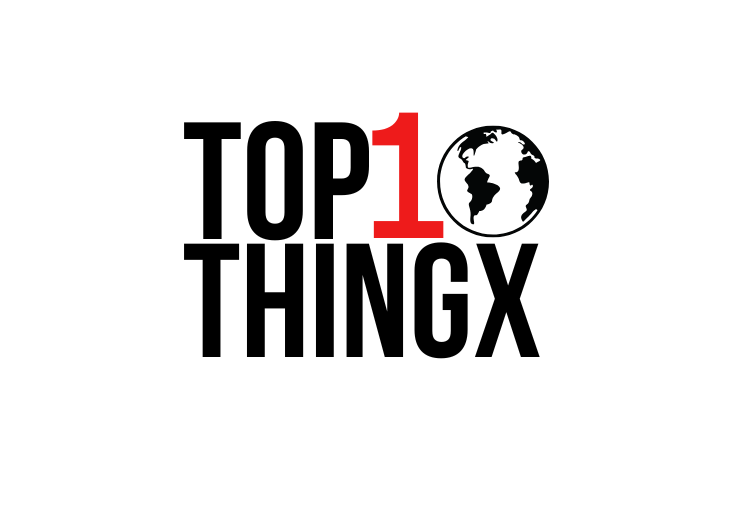Top 10 Largest Amusement Parks in the U.S.
The United States is home to some of the world’s top theme parks, offering a mix of adrenaline-pumping rides, family-friendly attractions, and immersive worlds. From the biggest theme park in the world to the coolest theme parks in the world, America has it all. Whether you’re chasing thrills, magical experiences, or record-breaking roller coasters, this list of theme parks in America top 10 is your go-to travel bucket list. List of the top 10 Largest Amusement Parks in the U.S. Here’s a curated list of the top 10 largest amusement parks in the USA, perfect for your next family getaway or adrenaline-packed adventure: Park Name Location Walt Disney World Resort Orlando, Florida Universal Orlando Resort Orlando, Florida Six Flags Great Adventure Jackson, New Jersey Busch Gardens Tampa Bay Tampa, Florida Cedar Point Sandusky, Ohio Disneyland Resort Anaheim, California Six Flags Magic Mountain Valencia, California Dollywood Pigeon Forge, Tennessee Hersheypark Hershey, Pennsylvania Legoland Florida Resort Winter Haven, Florida 1. Walt Disney World Resort – Orlando, Florida Known as the biggest theme park in the world, Walt Disney World is more than just one park — it’s a massive resort covering about 27,000 acres. It includes four main parks: Magic Kingdom, EPCOT, Hollywood Studios, and Animal Kingdom. Each offers unique attractions, from Cinderella’s Castle to the Avatar Flight of Passage. Fun Fact: It’s roughly the size of San Francisco.Travel Tip: Plan at least 4–5 days to explore it fully. 2. Universal Orlando Resort – Orlando, Florida Home to some of the world’s best amusement parks, Universal Orlando has two main parks — Universal Studios Florida and Islands of Adventure — plus Volcano Bay water park. Soon, the new “Epic Universe” will make it even bigger. Fun Fact: The Wizarding World of Harry Potter connects the two main parks via the Hogwarts Express.Travel Tip: Get a park-to-park ticket if you want to ride the Hogwarts Express. 3. Six Flags Great Adventure – Jackson, New Jersey Spanning over 510 acres, this is one of the top amusement parks in the US for thrill-seekers. It’s famous for Kingda Ka, the tallest roller coaster in the world. Fun Fact: The park is connected to a safari drive-thru with over 1,200 animals.Travel Tip: Visit in October for Fright Fest if you love Halloween events. 4. Busch Gardens Tampa Bay – Tampa, Florida A unique mix of zoo and theme park, Busch Gardens is one of the coolest theme parks in the world thanks to its African-inspired setting and thrilling rides like Iron Gwazi. Fun Fact: It’s home to over 200 species of animals.Travel Tip: Ride the Serengeti Express train for scenic park views. 5. Cedar Point – Sandusky, Ohio Known as “America’s Roller Coast,” Cedar Point is one of the world’s top theme parks for coaster lovers. With 17 roller coasters, it’s a record-holder for thrills. Fun Fact: Cedar Point has been around since 1870, making it one of the oldest amusement parks still in operation.Travel Tip: Visit early in the season to avoid long summer lines. 6. Disneyland Resort – Anaheim, California The original Disney park remains one of the top 10 theme parks in the world. It includes Disneyland Park and Disney California Adventure. Fun Fact: Walt Disney himself oversaw the opening in 1955.Travel Tip: Use Disney Genie+ to skip long lines. 7. Six Flags Magic Mountain – Valencia, California Holding the record for most roller coasters in a single park, Magic Mountain is a dream for adrenaline junkies and ranks high among top theme parks in the U.S. Fun Fact: It has 20 roller coasters — more than any other park in the world.Travel Tip: Visit during Holiday in the Park for special seasonal events. 8. Dollywood – Pigeon Forge, Tennessee Owned by Dolly Parton, Dollywood is one of America’s top 10 theme parks for its Southern charm, shows, and mountain scenery. Fun Fact: Dollywood features award-winning festivals year-round.Travel Tip: Try the cinnamon bread from the Grist Mill — it’s legendary. 9. Hersheypark – Hershey, Pennsylvania This chocolate-themed park is among the top amusement parks in the US for families. It features rides, a water park, and Hershey’s Chocolate World next door. Fun Fact: Founded by Milton Hershey in 1906 as a place for his employees.Travel Tip: Don’t miss the free chocolate-making tour. 10. Legoland Florida Resort – Winter Haven, Florida Perfect for kids, this park is a colorful wonderland that easily makes the list of the top 10 theme parks for families worldwide. Fun Fact: Many attractions are made with millions of LEGO bricks.Travel Tip: Bring swimsuits for the water park section. Conclusion From coast to coast, the U.S. offers the world’s best amusement parks — each with its own unique twist. Whether you’re exploring the coolest theme parks in the world like Busch Gardens, chasing records at Cedar Point, or getting lost in the magic of the biggest theme park in the world, these destinations prove why America dominates the theme parks in America top 10 list year after year. Explore More on TopTenThingX If you’re fascinated by the scale and excitement of the largest amusement parks, you might also enjoy our insights into other thrilling destinations and experiences: Top 10 Cities with Highest Crime Rates – Discover which countries top the list for safety concerns. Top 10 Fastest Growing Small Business Ideas in the USA – Explore emerging business opportunities across the nation. TopTenThingX – Dive into more top 10 lists across various categories.










